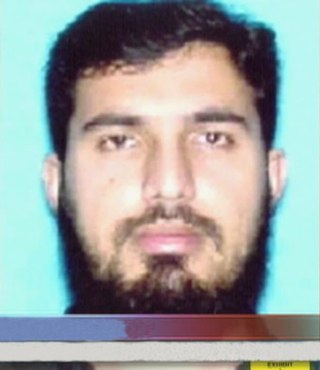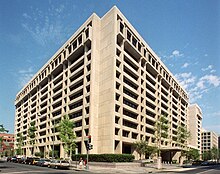
Jemaah Islamiyah is a Southeast Asian Islamist militant group based in Indonesia, which is dedicated to the establishment of an Islamic state in Southeast Asia. On 25 October 2002, immediately following the JI-perpetrated 2002 Bali bombings, JI was added to the UN Security Council Resolution 1267.

The Buffalo Six is a group of six Yemeni-American friends who pled guilty to charges of providing material support to al-Qaeda in December 2003, based on their having attended an al-Qaeda training camp in Afghanistan together in the Spring of 2001. The suspects were facing likely convictions with steeper sentences under the "material support law" which requires no proof that a defendant engaged in terrorism, aided or abetted terrorism, or conspired to commit terrorism.
In 2001, a network of interconnected terrorist cells in France, Belgium, and the Netherlands was uncovered by law enforcement. The network had connections to al-Qaeda and was planning to commit one or more bombings.

A series of Islamist terrorist attacks linked to al-Qaeda were planned to occur on or near January 1, 2000, in the context of millennium celebrations, including bombing plots against four tourist sites in Jordan, the Los Angeles International Airport (LAX), USS The Sullivans, and the hijacking of Indian Airlines Flight 814.
The Moroccan Islamic Combatant Group, known by the French acronym GICM, was a Sunni Islamist militant organization that operated in Morocco, North Africa, and Western Europe. The organization's objective was to establish an Islamic government in Morocco.
Operation Crevice was a raid launched by Metropolitan and local police in England on the morning of 30 March 2004. It was in response to a report indicating cells of terrorists of Pakistani origin operating in the Thames Valley, Sussex, Surrey and Bedfordshire areas, the source of which was said to be an interception of an instruction sent from Al-Qaeda leaders in Pakistan to militants in Britain. In March 2020 Jonathan Evans, Former Director General, MI5 gave an interview and citing one passage: 'The plot itself, however, appeared to be encouraged and fomented by al-Qa`ida in the tribal areas. It was one of the early ones we saw. It involved predominantly British citizens or British residents of Pakistani heritage, something which became something of a theme for this period'. The operation resulted in five men being found guilty in April 2007 of conspiring to cause explosions likely to endanger life.
Dhiren Barot is a convicted Indian-born British terrorist.
Terrorism in Australia deals with terrorist acts in Australia as well as steps taken by the Australian government to counter the threat of terrorism. In 2004 the Australian government has identified transnational terrorism as also a threat to Australia and to Australian citizens overseas. Australia has experienced acts of modern terrorism since the 1960s, while the federal parliament, since the 1970s, has enacted legislation seeking to target terrorism.

On 29 June 2007, two car bombs in London were discovered and disabled before they could be detonated. The first device was left near the Tiger Tiger nightclub in Haymarket at around 01:30, and the second was left in Cockspur Street, located in close proximity to the nightclub.

In the United States, a common definition of terrorism is the systematic or threatened use of violence in order to create a general climate of fear to intimidate a population or government and thereby effect political, religious, or ideological change. This article serves as a list and a compilation of acts of terrorism, attempts to commit acts of terrorism, and other such items which pertain to terrorist activities which are engaged in by non-state actors or spies who are acting in the interests of state actors or persons who are acting without the approval of foreign governments within the domestic borders of the United States.

The international activities of Al-Qaeda includes involvements in Europe, where members of the group have been involved in militant and terrorist activities in several countries. Al-Qaeda has been responsible for or involved in attacks in Western Europe and Russia, including the 2004 Madrid train bombings, 2010 Moscow Metro bombings, 2011 Domodedovo International Airport bombing, and the January 2015 Île-de-France attacks.
The 2009 New York City Subway and United Kingdom plot was a plan to bomb the New York City Subway as well as a target in the United Kingdom.

Najibullah Zazi is an Afghan-American who was arrested in September 2009 as part of the 2009 U.S. al Qaeda group accused of planning suicide bombings on the New York City Subway system, and who pleaded guilty as have two other defendants. U.S. prosecutors said Saleh al-Somali, al-Qaeda's head of external operations, and Rashid Rauf, an al-Qaeda operative, ordered the attack. Both were later killed in drone attacks.
Terrorism in Denmark refers to terrorist attacks carried out in Denmark or by people connected to Denmark. Like other countries Denmark increased its focus on defending against terrorist attacks after the September 11 attacks in New York in 2001. The September 11 attacks led to strengthened laws in a number of areas. 31 May 2002 the parliament of Denmark approved anti-terror legislation with the aim of preventing terrorism in Denmark and internationally. The new legislation aligned with the definitions of terrorism which were in use by the European Union and the United Nations.

Islamic terrorism in Europe has been carried out by the Islamic State (ISIL) or Al-Qaeda as well as Islamist lone wolves since the late 20th century. Europol, which releases the annual EU Terrorism Situation and Trend report (TE-SAT), used the term "Islamist terrorism" in the years 2006–2010, "religiously inspired terrorism" 2011–2014, and has used "jihadist terrorism" since 2015. Europol defines jihadism as "a violent ideology exploiting traditional Islamic concepts".
In May and June 2002, Moroccan authorities arrested several people in connection with an Al-Qaeda plot to attack American and British naval ships and shipping in the Strait of Gibraltar. Three Saudi Arabians were arrested for the plot, followed by several Moroccan Islamists, many members of Salafia Jihadia.

Usman Khan, also known as Abu Saif, was a Pakistani-British terrorist who was convicted of plotting a terrorist attack in 2012. He was shot dead by City of London Police after being restrained by members of the public whilst committing a knife attack near London Bridge on 29 November 2019, where he killed two people and injured three others.
Operation Guava is the code name for a long-term British Security Service (MI5) operation. The operation tracked a terrorist cell, which planned "a significant terrorist plot." The Operation Guava plotters used the Al-Qaeda in the Arabian Peninsula magazine Inspire as an instruction manual for the bomb they planned to leave in a toilet stall at the London Stock Exchange. The police code name for the investigation was Operation Norbury.









